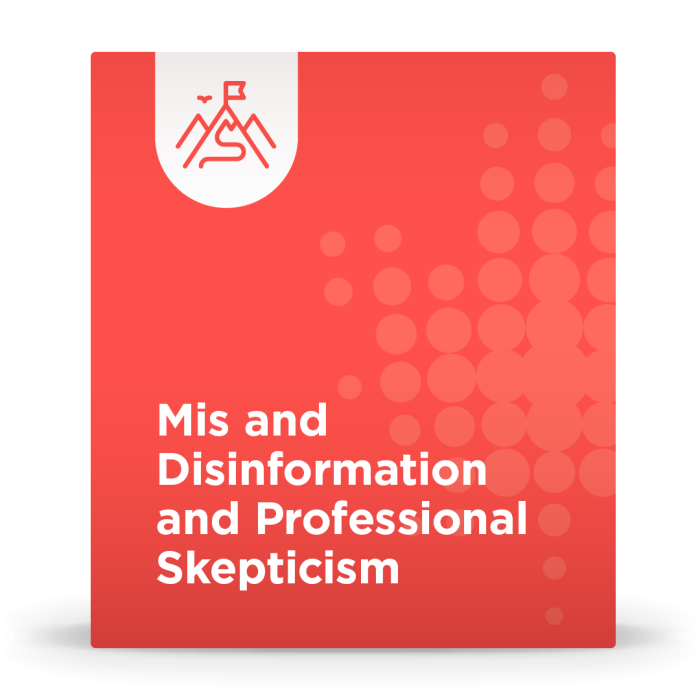Mis and Disinformation and Professional Skepticism
Non-member Price: $87.00
Delivery Method: E-Learning
Available Now!
Overview:
When you read a headline online that says “Insanity: The Word ‘Man’ Is Banned at Princeton University,” do you immediately think “That goes too far!”? Or is your first reaction “Really? That sounds like an author writing a sensational headline to generate traffic to their article.”? As professionals, our clients, and the public in general count on us to be the “voice of reason” and to show a healthy amount of skepticism and have an 'inquiring mind'. In fact, professional skepticism is one of the key underlying competencies supporting our ability to meet our ethical requirements. This audio-only course explores the ways in which information is created and presented to influence our perception and decision-making.
The goal of this course is to explore risk areas where information and messages can be presented to deceive us, and how we can fool ourselves as a result of our own implicit biases. Just as importantly, the course examines how professional skepticism fits into our obligations as CPAs within the Rules of Professional Conduct, primarily by supporting the requirements for objectivity, due care, and professional competence.
Throughout the course, we will examine actual stories and hear examples of messaging that illustrate these risks and biases. After working through the course, you should have a better understanding of common pitfalls that threaten decision-making and have some additional tools to better meet those ethical obligations under the Code.
Learning Objectives:
Upon completing this course, you should be able to:
· Recognize the importance of professional skepticism as a key element of meeting professional ethical principles
· Distinguish how professional skepticism is applied in the context of assurance and non-assurance roles
· Recognize how quoted averages can deceive, and correctly interpret means and medians, factoring in variability
· Identify common ways that samples, stated accuracies, and unwarranted precision levels can be used to deceive us, and distinguish between correlation and causation
· Identify how charts can be used to manipulate messages, and determine common methods of deception through qualitative messages
· Establish ways to avoid making poor decisions based on misleading information.
· Identify common types of biases that negatively affect our decision-making
· Recognize that biases exist as part of human nature and identify why this is the case
· Distinguish between unconscious bias and racism
· Determine effective ways to mitigate the negative impact of biases on decision-making
Who Will Benefit:
Anyone who is interested in improving their ability to demonstrate professional judgment and skepticism, in the workplace and as consumers.
Non-member Price: $87.00
Delivery Method: E-Learning
Available Now!

